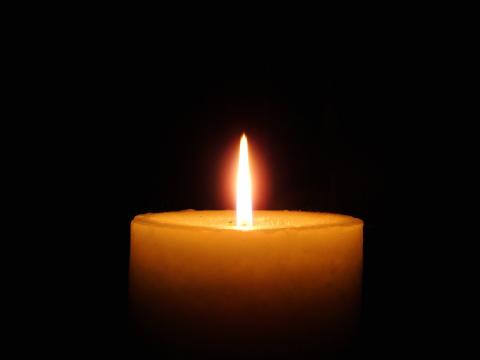Submitted by Julia Shear
T. Leslie Shear, Jr. passed away on 28 September 2022 in Princeton, N.J. after a brief illness. A distinguished archaeologist, ‘rigorous scholar’, and ‘inspiring teacher’, he is best known as an authority on the archaeology of the ancient city of Athens, as director of the Agora Excavations in Athens, Greece, a position which he held between 1968 and 1994, and as Professor of Classical Archaeology at Princeton University, where he taught between 1967 and 2009 in the Department of Art and Archaeology. His scholarly contributions include two important books, Kallias of Sphettos and the Revolt of Athens in 286 B.C. (1978) and Trophies of Victory: Public Building in Periklean Athens (2016), as well as many articles, including meticulous preliminary excavation reports of the work done in the Agora, an often-cited article on the Monument of the Eponymous Heroes, and a thorough discussion of the Persian destruction deposits in the Agora. The (late) Andy Stewart noted Leslie’s ‘acumen, encyclopedic knowledge, humanity’ and his ability to ‘write precisely and elegantly’. His colleague Willy Childs described Trophies of Victory as ‘indispensable for the study of Athenian architecture of the classical period’.
Leslie was born on May 1, 1938 to Josephine and T. Leslie Shear, in Athens, Greece, where his father, a noted archaeologist, was directing the excavations at the Athenian Agora, which he had begun in 1931. After growing up in Princeton, and attending the Lawrenceville School (1952-1955), Leslie’s studies took him to Princeton University where he majored in Classics and received an A.B. summa cum laude in 1959. He then participated in the Regular Program of the American School of Classical Studies in Athens, where he held the John Williams White Fellowship, before returning to Princeton University in 1960 to start his graduate work in classical archaeology, studies which culminated in his Ph.D. in 1966. His first teaching position took him to Bryn Mawr College (1963-1967), and then, in 1967, Leslie returned to Princeton and taught in the Department of Art and Archaeology until his retirement in 2009. At Princeton, he ran the Program in Classical Archaeology for many years and trained large numbers of students, many of whom followed him into Greek archaeology.
Leslie’s appointment as director of the Agora was the culmination of an excavating career which saw him gain experience at the Greek sites of Mycenae, Eleusis, Perati, and Corinth and at Morgantina in Sicily. At both Mycenae (in 1953 and 1954) and the Athenian Agora (in 1955), he assisted with the excavation photography, steps which led to his development as an excellent archaeological photographer. This excavating experience also led to his meeting with his wife to be, Ione Mylonas Shear, when they both worked her father, George E. Mylonas, also a well-known archaeologist, in the summer of 1956 at Eleusis. Both Ione and Leslie continued to work for George Mylonas at Mycenae in the 1960s and Ione also worked for Leslie after he became director of the Agora. Under Leslie’s direction, the excavated area of the Agora expanded significantly south, east, and especially to the north of the metro line. The work in the northern sections was particularly significant because it led to the discovery of the Royal Stoa and the Painted Stoa, both well known to scholars through the literary testimonia and from their connections with Sokrates and Zeno the philosopher. In preparation for the 1980 campaign, Leslie took the momentous decision to institute the Agora Volunteer Program: now for the first time in Greece, the actual work of excavation would be done by student volunteers, rather than by local Greek workmen, as was traditional in Greece. Instituted in the face of significant opposition, the program was an instant success which quite simply changed the face of archaeology in Greece. It provided opportunities for undergraduates to excavate and it paved the way for the fieldschools which are now common in the country. The Volunteer Program also brought another whole group of students into contact with Leslie and allowed them to benefit from his teaching: he was very much a hands-on director and was always ready to get into the trench and to help the students work out the strategraphy. In the pottery washing area, he patiently explained to them how and why the pottery was to be dated and he expected his supervisors to be able to date the material which they were finding. They, too, benefited from his extensive knowledge of Athenian pottery.
Leslie’s students at Princeton, in the Agora, and at the American School remember him with great fondness. Carol Stein, a student in Leslie’s seminar on building inscription at the American School, wrote ‘I will never forget how patient [he] was with me during his epigraphy seminar in 1992/93—I knew next to nothing on the topic, and he gently guided me along so that I could keep up with the others in the class’. Nassos Papalexandrou, one of his Princeton graduate students, said ‘I fondly cherish the memory of Professor Shear as teacher, mentor, and, not least, an exemplary field archaeologist’, while Jane Chapin described Leslie as ‘a crucial model of pedagogy’. Among the many students whom Leslie taught in one context of another, she is far from alone in viewing him as a model. At the American School, especially in his later years, Leslie was regarded as ‘formidable yet approachable and a fixture in the Main Reading Room’ of the library, as Ben Millis, a younger scholar, put it. His kindness and hospitality, especially when Ione was alive, were legendary. Leslie’s warmth and kindness were shared with everyone and many younger colleagues at Princeton remember fondly how supportive he was when they arrived there. He was a devoted husband, father, and grandfather, and he will be greatly missed. He is survived by his daughters, Julia L. Shear, a well-known scholar in her right, and Alexandra Shear, and his grandchild, Briar Shear.

